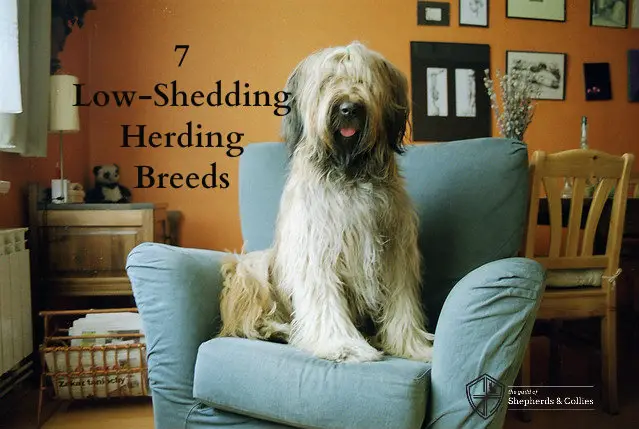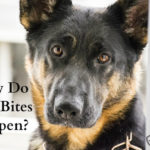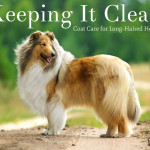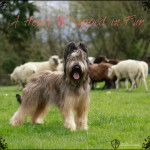7 Herding Breeds That Won’t Make You Sneeze, Low-Shedding
7 Low-Shedding Herding Breeds
Love herding breed dogs but don’t love hair all over the house? You might be surprised to learn that a number of herding breeds shed very little. Keep in mind, though, that low-shedding breeds often require extra grooming to prevent mats. Many people don’t mind extra brushing or visits to a professional groomer if it means they don’t have to sweep the floor every day!
If you’re looking for a low-shedding herding breed because you have allergies, spend time with adult dogs of the breed you are considering before bringing home a puppy to make sure you don’t react to them. No dog is truly hypoallergenic and all dogs will shed a little, but people with allergies might find they can live with the following breeds:
Bergamasco
An ancient herding breed that hails from the Italian Alps, the Bergamasco’s woolly, corded coat is naturally low-shedding. It might look like a lot of work, but once you “rip” the coat (at around 1 year of age), it’s set for life. A Bergamasco only needs bathing one to three times per year, and the coat naturally repels dirt, leaves, and other debris—no brushing required! Read more about Bergamasco coat care.
Bouvier des Flandres
This majestic Belgian herding breed is blessed with a harsh double coat that doesn’t shed all over the house. Loose hairs will become trapped within the coat, however, so you must thoroughly brush and comb out the coat at least once every week to prevent matting. Bouviers also require professional grooming every few months. Here are some Bouvier grooming tips.
Briard
This breathtaking French sheepherder and flock guardian has a coarse coat that naturally repels water and dirt and sheds very little when cared for properly. You will need to allot at least two house a week to careful brushing and combing to prevent mats, as well as monthly baths. Briards require little trimming, so you can either choose to groom them yourself (if you have a place to bath and dry a large dog) or take them to a professional. Find expert tips on grooming the Briard here.
Polish Lowland Sheepdog
The lively little Polish Lowland Sheepdog has a long, shaggy double coat—a soft, dense undercoat and a coarser outer coat. The coat is low-shedding but requires a lot of upkeep to prevent matting. Plan to dedicate several hours a week to brushing and combing, along with regular bathing. Pets may be kept in a shorter clip for easier maintenance. Learn more here.
Puli
A Puli’s cords form naturally, starting when a puppy is about 9 months old. You will have to help the coat along, separating the mats to the skin. It doesn’t take long to bathe the cords, but drying can take hours. You want to make sure the cords are absolutely dry after bathing—damp cords can mildew. For easier maintenance, you can also choose to keep the coat clipped short, rather than corded. Check out this great guide to Puli grooming.
Pumi
This adorable Hungarian herding breed has a naturally low-shedding coat with surprisingly little grooming required. Simply bathe and let air-dry. The coat will spring into curls and corkscrews. Brush out double coat twice a month and have the Pumi professionally groomed every three months. That’s it! Learn more on the Pumi’s standards and their ease of coat care.
Spanish Water Dog
This rustic herding breed’s coat is not only low-shedding but low-maintenance, too. Traditionally, the Spanish Water Dog’s coat is never brushed, combed, blow-dried or trimmed. Instead, the coat is sheared to the skin once a year like a sheep. As the hair grows out, it will form natural cords. You might also choose to shave your Spanish Water Dog more frequently for an even easier-to-maintain, short coat. Find more information about grooming the Spanish Water Dog here.
Article By:
Jackie Brown







